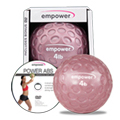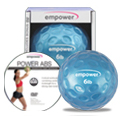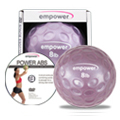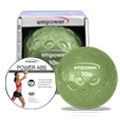This time last year, I was gearing up to walk my first marathon. Given the schedule, this year’s walk came sooner…but at least I knew what to expect this time around. Until I registered for the 2011 Boston Marathon Jimmy Fund Walk, I figured that there’s no way I’d ever get to do a marathon. First off, I thought you could only really run them (not true). Second, I knew I couldn’t run one (true – and also would be in direct violation of my doctor’s “DON’T RUN” rule). Third, I assumed marathons were only for elite athletes or people who are VERY, very in-shape (not necessarily true). And it wasn’t until I did my first marathon that I figured out what was really true and what wasn’t. Fourth, and perhaps most importantly, walking one marathon prepared me so much more for the successive ones than anyone’s advice could have, so I’ve decided to cram all those lessons learned into the next couple of blog posts.
As a reminder, the Boston Marathon Jimmy Fund Walk is an annual walking event in the Boston area that benefits the Dana-Farber Cancer Institute, a cancer research and treatment facility that has gained a lot of notoriety for their pediatric care, in addition to their adult care, as well as a boatload of research and treatment options that they’ve developed or pioneered. Loads of people support them, and they have strong affiliations with local sports teams, like the Boston Red Sox and the Boston Bruins. Kids with cancer – how can you NOT support that?!
You don’t have to walk a full marathon; you can walk a half-marathon (13.1mi), which departs from Babson College, you can walk a 5mi course that departs from Boston College, or you can walk a 5K course that departs from Dana-Farber itself. I chose the full marathon (26.2mi), which leaves from Hopkinton, MA, and follows the entire Boston Marathon route run by all those amazing people on Patriots Day every year.
The way I see it, walking any marathon comes down to a few essential things – and walking one for charity just adds an additional component:
- Event Selection
- Gearing Up
- Training
- Fundraising
- Walking
- Recovering
I’ll cover the first two of those items in this post, and the remaining two will go into the next three posts. Now for the VERY important disclaimer: None of the manufacturers, companies, etc. that I’m writing about have given me ONE THING in exchange for this. I’m writing my opinion about products, services, and businesses that I picked on my own without any kind of quid pro quo. Also, I’m not an expert. Before you go and do something as nuts as walking 26.2mi in one day, PLEASE consult with your doctor, personal trainer, and any other folks who can give you an eyeball up and down and determine whether they think you’re up for it. In other words, don’t do or say as I do until you’ve had someone else confirm that you should take part in a walking event.
Event Selection
There aren’t a ton of walking marathons in this area, or at least there aren’t a lot that I hear about. The Boston Marathon is one of those elite, world-famous races, so the temptation to get to do this amazing route is incredibly high. Since I know I can’t run a race (remember: doctor’s orders!), I figured I HAD to try to walk it. The bar for entry is incredibly low – anybody can register (small entry fee) and this year, you needed to raise a minimum of $300. In events like this, where there’s a minimum fundraising amount, the event organizer will take a credit card number from you (whatever you use for registering) and if you haven’t raised at least the minimum by some time on or after the event date, the difference to get you to that minimum will be charged to your card. So, there’s motivation to raise $$. If you want to try a walking marathon with no fee, I suppose you could always organize something that gives you bathroom breaks around every 2-3mi, walking past your friends’ houses for 26.2mi…but going with a professionally organized event is a much better bet. Really.
Gearing Up
I had some trial and error going on here, at first. My first selection of shoes, a pair of Saucony Grid shoes, was nice enough…but the toebox wasn’t really big enough for my ultra-wide feet. What this meant was that I ended up with a bloody sock and damage to my feet. NOT. GOOD. My pointer toenails STILL haven’t recovered from that, even more than a year later.
After a false start attempt with a running store nearish to my office, I found what I needed at Marathon Sports – a local chain of running stores that’s known for being serious about getting you into the right gear. In my case, my wide feet demanded a similarly wide shoe, so the right fit for me ended up being an EXTRA WIDE pair of men’s Brooks Addiction sneakers. What’s the lesson here? It’s not that you should go to a running store, since that should be a given. The lesson I learned was that I should ignore the mens/womens labels when it comes to certain gear, since the womens line may not have what I need to fit my size or shape. Mens shoes proved to be the right way to go.
As far as everything else – all I wear is wicking material. A trip to the nearby outlet mall scored me plenty of that; I have sleeveless shirts (tanks, but not spaghetti strap ones), capri pants, and jog bras that all wick moisture away from my body. I’ve come to the point in my life where I’m so used to wearing wicking materials that I can’t work out in cotton. I had a workout in a cotton t-shirt at BlogHer ’12 and I thought I was going to suffocate, the material was so hot and stuffy. UGH. I won’t link to specific items, since everything I got came from the outlet and is likely discontinued by now. I can say that I tend to favor Reebok items, because they’re local. Of course.
My socks are also wicking material. You may not care a ton about socks until you realize how much work they have to do on your behalf. You need the right amount of cushion but not too much thickness, you need breathable material while still providing protection…you need your socks to do a ton without costing you an arm and a leg. The ones I chose come from REI; they’re fab socks that go just above the ankle, so I don’t have to worry about any possibility of them slipping down and leaving my ankle exposed for blistering. Not that my Brooks shoes would ever TRY to give me a blister, but a little protection can go a long way.
At the recommendation of a friend, I even went with wicking underwear (also from REI). I can’t tell whether the stuff is magical or not, but I can say that having everything on your body in the same general level of breathability can contribute to your overall level of comfort, and even a little bit of straight-up cotton can throw things off. At least for me, that’s what I’ve found. In other words, your mileage may vary, so try stuff out if you want to change things up or leave them as they are when you find something that works. This is what works for me.
Next post: Training and Fundraising…




